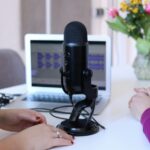Video Call Tips & Tricks for Remote Work
In the age of COVID-19 and the mandates that have been rolled out as a result thus far, many companies have no option but to move forward and engage with tools that exist in remote work. An abrupt, unpredictable, and scary pivot like this can be difficult and cause major disruption in workflow and communication patterns as employees, managers, and entities transition.
Between new technology, adjusting benchmarks, the uncertainty of each new day, and the market volatility — this is uncharted territory. Fortunately, we live in an age and time of unprecedented technology and access to human connection without physical proximity.
There are a huge variety of incredible tools available to assist in providing access to your team and feeling connected, despite the distance. One great example of this is video calls. The following are a few tested best practices for video calls as you (and your teams) adjust to our now-reality.
Use video calls with cameras on.
-People resist this at first, but it really helps communication, empathy, and accountability.
-Note in your meeting invite that cameras are welcome/expected in order to let people prepare.
-Pay special attention to how easy it is for others to see and hear you.
Camera angles:
-If you use a single-screen device (i.e. laptop, tablet, or phone), make sure your front-facing camera is not covered and is in good condition.
-If you use multiple screens, it’s important to have the camera attached to the screen that you use the most, so that people don’t have to stare at the side of your head, or otherwise think you are distracted.
–This is a good USB webcam to attach to the top of a monitor.
-Set up your camera at eye level. I use a laptop stand to raise mine up when using my laptop camera, and a monitor stand to get my monitor up to the right height. When using two external monitors, I put my laptop in between them at the same height. This is good for ergonomics and it helps avoid weird camera angles, like looking down or up your nose :).
-Watch your video thumbnail to make sure you are centered in the picture. Lots of times, people are barely sticking over the bottom or side of the camera view. Adjust your camera as needed during the call so that you’re centered in the frame.
-Many video conferencing softwares have a preview or “join with video” option that are great for checking out your “frame” prior to beginning a call.
Lighting:
-Don’t sit with your back to a window, because it can lead to the “witness protection” look, with only a silhouette visible to attendees.
-You may need to add additional lights for people to be able to see you clearly. I have two of these lights with softboxes to reduce glare: light recommendation, mount recommendation.
Audio:
-Be cautious of relying on a built-in mic/speaker. They can often cause echo on video calls, making communication difficult. Testing out your audio is absolutely recommended prior to joining any call as you’re setting up your software.
-A good pair of headphones or headset can be an aid in reducing echo and blocking out background noise. If you need, this headset recommendation is great. It’s wireless, noise canceling, has optional bluetooth, and comes with a charging dock.
-If you’re on calls for extended periods, an external speakerphone is helpful to give your ears a break from wearing a headset all the time. This one works very well.
-Watch your video thumbnail to see if your audio is getting picked up. Most video tools will show feedback when your mic is working properly, so you generally don’t need to ask if people can hear you.
Also make sure to mute your audio when you’re not speaking, that way any background noise that might be around you won’t be picked up while someone else is talking.
Paper and Whiteboards:
-The screenshare setting on video conferencing software can be incredibly helpful for sharing spreadsheets live, working through documents, brainstorming, and problem-solving.
-For sharing live video of papers or whiteboard notes, use an IPEVO HD document camera. You can show paper sketches or aim it at a whiteboard. The high def version of this camera actually shows whiteboard details pretty well (built-in laptop cameras do not). It’s also good for showing mobile phone screens/interactions on camera.
If you are working near others:
-Consider making a “status light” to help others know when you are busy/free. This is a link to a video tutorial to show you an example. Alternatively, this could be used as a “worktime” tool for kid!
Although we live in an age of uncertainty, there are practical, proactive measures you can take to increase your own security and productivity without hoarding all the hand-sanitizer and toilet paper. I hope these are helpful suggestions and you choose to find the silver lining in each circumstance you are given. Be well and don’t hesitate to get in touch with any questions!




